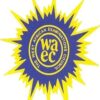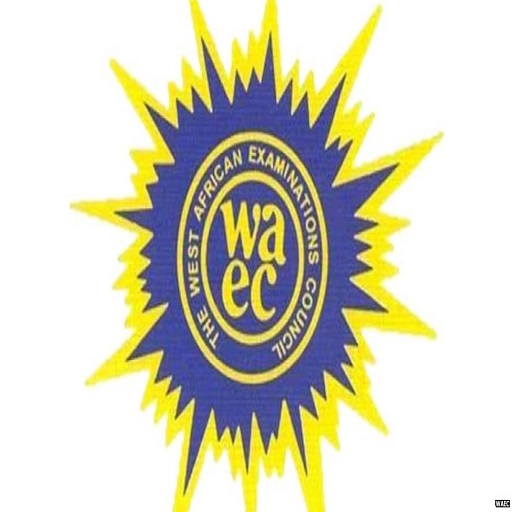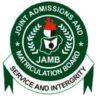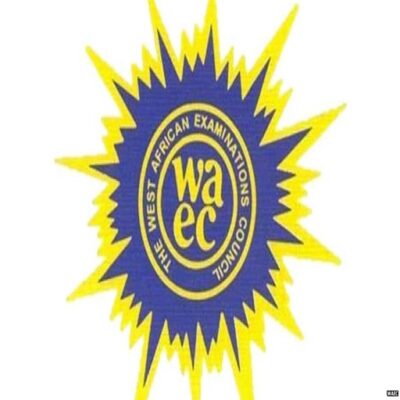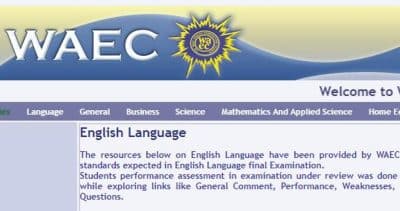Are you searching for Biology WAEC past question 2022? WAEC Biology past question 2022? Biology WAEC past question paper? Biology WAEC past question paper 2022? WASSCE 2022 Biology question paper? WAEC 2022 Biology question paper? WAEC 2022 Biology past question paper? If yes, then your search ends here.
Related Post: WAEC ENGLISH PAST QUESTION 2022
1. Which of the following statements about living things is correct?
A. Animals respire using carbon (IV) oxide as a raw material
B. Growth in plants is limited after some time
C. Most plants respond to stimulus slowly
D. Higher animals can reproduce asexually
2. Organ level of organization in living things is found in
A. waterleaf plant
B. virus particle.
C. kidney.
D. spermatozoon.
Diagrams X and Y below are illustrations of transverse sections of a part of plants. Study them and answer questions 3 to 5.

3. Which of the following statements is not correct? Diagrams X and Y are sections of
A. roots
B. a dicotyledonous root and a monocotyledonous root respectively.
C. vascular bundles.
D. stems.
4. The part responsible for conducting water and dissolved mineral salts from the soil to the leaves is labelled
A. I
B. II
C. III
D. IV
5. The part labelled II is the
A. Pith
B. xylem
C. phloem
D. endodermis
6. The organelles in cells which arc also referred to as suicidal bags are the
A. mitochondria.
B. lysosomes.
C. ribosomes.
D. nuclei.
7. The process that brings about the shrinking of a Spirogyra cell when placed in a strong solution is
A. osmosis.
B. autolysis.
C. plasmolysis.
D. diffusion
8. The region of a plant stem in which cells divide to increase its diameter is the
A. cambium.
B. phloem.
C. xylem.
D. collenchyma.
9. The total number of caudal vertebrae in animals X and Y is 4 and 27 respectively. The animals are likely to be
A. fish and human.
B. toad and rat.
C. toad and fish.
D. humans and rat.
10. Which of the following blood components has the greatest affinity for oxygen and carbon (IV) oxide?
A. Lymphocyte
B. Erythrocyte
C. Blood plasma
D. Thrombocyte
Use the following processes to answer questions 11 and 12
I – Ribs move upward and outward
II – Diaphragm relaxes
III -Volume of thorax increases
IV – Air is forced out of the lungs
11. Which of the processes take place during inspiration?
A. I and III only
B. II and III on ly
C. II and IV only
D. III and IV only
12. Which of the processes is a direct result of contraction of the intercostal muscles?
A. I
B. II
C. III
D. IV
13. The process by which the amount of water and solutes in the blood are controlled is known as
A. haemolysis.
B. diffusion.
C. turgidity.
D. osmoregulation.
The table below shows the effect of hormones I, II, III and IV on some parts of the human body. Where (4) represents effect and (X) represents no effect of hormone on the corresponding part of the body. Study it and answer questions 14 and 15.

14. Which of the following hormones are I, II, III and IV respectively?
A. ADH, Glucagon, Oestrogen, Adrenaline
B. Adrenaline, Glucagon, Oestrogen, ADH
C. Glucagon, ADH, Oestrogen, Adrenaline
D. Adrenaline, ADH, Oestrogen, Glucagon
15. The hormone responsible for anxiety is
A. I
B. II
C. III
D. IV
The diagram below is an illustration of some parts of a mammalian ear. Study it and
answer questions 16 to 18.

16. The parts labelled I are the
A. semi circular canals:
B. ossicles.
C. cochlea.
D. external auditory meatus.
17. Which of the parts correctly grouped?
| Inner ear | Middle ear | Outer ear | |
| A | I, IV | III | II |
| B | III | II, IV | I |
| C | I | II | III, IV |
| D | II | I, III | IV |
18. The middle car is connected to the pharynx by the part labelled
A. 1.
B. II.
C. III.
D. IV
The diagrams below are illustrations of two different cells involved in a biological process in mammals. Study them and answer questions 19 to 21.

19. Which parts of P and Q fuse to complete the biological process?
A. III and I
B. IV and I
C. III and II
D. IV and II
20. Which of the following statements about P and Q is correct?
A. Both cells are structures for asexual reproduction
B. Both cells normally belong to the same individual
C. Both cells are found in plants
D. The union of both cells gives rise to a new mammal
21. If the number of chromosomes’ in the skin cells of mammals is 46, how many chromosomes would be found in P and Q respectively?
A. 23 and 23
B. 23 and 46
C. 46 and 23
D. 46 and 46
22. In which of the following structures is simple sugar produced?
A. Vacuole
B. Cytoplasm
C. 46 and 23
D. 46 and 46
23. An evidence of the occurrence of photosynthesis in an experiment is the
A. release of carbon (IV) oxide.
B. release of oxygen.
C. formation of water molecules.
D. formation and release of fructose.
24. The major sources of vitamin A are
A. .egg yolk, carrot and palm oil.
B. mango, pawpaw and eggs.
C. sorghum, soya bean and liver.
D. rice bran, green vegetables and milk.
Diagram J is a protease while diagrams K, L, M and N are food substances. Study them and answer questions 25 to 27.

25. Which of the illustrated food substances would form a reaction with protease J?
A. K
B. L
C. M
D. N
26. Protease J would react with the particular illustrated substance because enzymes
A. are denatured at a high frequency.
B. are specific in their action.
C. remain unchanged after a reaction.
D. speed up the rate of chemical reaction.
27. After a reaction between protease J and the food substance, the end-product would be
A. fatty acids.
B. glucose.
C. amino acids.
D. water.
28. The property of clayey soil that prevents it from supporting thick vegetation is its
A. composition of chemically weathered granite rocks
B. inability to retain much water.
C. tendency of becoming waterlogged.
D. porosity and low water-retention ability.
29. Which of the following practices will not maintain soil fertility?
A. Preventing soil erosion
B. Bush fallowing
C. Leaving the land bare
D. Planting cover crops
30. A group of organisms of the same species living in a particular place is known as
A. colony.
B. community.
C. ecosystem.
D. population.
The diagram below is an illustration of an experiment on sedimentation of soil. Use it to answer questions 31 and 32.

31. The organic component of the soil is labeled
A. I.
B. II.
C. III.
D. IV.
32. The part labelled IV is
A. silt.
B. sand.
C. humus.
D. clay.
33. Which of the following pyramids is not used in ecology? Pyramid of
A. energy
B. numbers
C. biomass
D. organisms
Study the food chain illustrated below and use it to answer questions 34 to 36.
J → K → L → M → N
34. Organism J is normally sustained by energy from
A. green plants.
B. carbohydrates.
C. organism K.
D. sunlight.
35. Which of the following statements about organism L is correct? It
A. feeds on organism M
B. is a primary consumer
C. is the producer
D. is a secondary consumer
36. The position occupied by each of organisms J, K, L, M and N in the food chain is known as the
A. energy level.
B. trophic level.
C. food web.
D. pyramid of numbers.
37. Which of the following features is not an adaptation of plants to aquatic habitats?
A. Breathing roots for entry of air
B. Flowers are raised above water to attract pollinators
C. Spongy tissues containing gases for buoyancy
D. Hairy structures on the leaves to reduce water loss
38. The biological association that contributes directly to succession in a community is
A. competition.
B. predation.
C. parasitism.
D. commensalism.
39. The conservation of natural resources is enhanced by the following practices except
A. controlling farming activities.
B. protecting endangered species.
C. Poaching in game reserves
D. establishing parks and gardens.
40. The burning of farmlands should be discouraged because it
A. destroys the organic components of the soil.
B. increases the population of wild animals on the farm.
C. increases the dormancy period of some seeds.
D. destroys some plant pests.
41. The use of a lighter instead of match sticks is a way of conserving
A. petroleum.
B. forest.
C. water.
D. wildlife.
42. An accident victim was successfully transfused with blood from the father whose blood group is AB. The blood group of the accident victim is
A. B.
B. 0.
C. AB.
D. A.
43. Which of the following traits in humans is an example of physiological variation?
A. Skin colour
B. Fingerprint
C. Tongue rolling
D. Height
44. Individuals belonging to blood group 0 are universal donors because
A. antigens are absent in their blood cells.
B. members of the group constitute the highest number of humans
C. there are no antibodies in their blood plasma.
D. the antigens in their blood cells arc easily destroyed
45. Two tall plants were crossed and all the F1 plants were tall. When the F1 plants were selfed, some of the F2 plants were tall while others were short. What are the possible genotypes of the original plants?
A. Tt and tt
B. TT and TT
C. tt and tt
D. TT and Tt
46. Which of the following statements best describes a test cross? It is
A. to determine the genotype of an individual whose phenotype is known
B. to determine the phenotype of an individual whose genotype is known
C. between the progeny of parents to ascertain their external expressions
D. between two homozygous recessive individuals to confirm the genotypes of
the offspring
47. Which of the following statements about sex-linked traits is not correct?
A. Males inherit sex-linked traits from their fathers
B. Sex-linked traits are more common in males
C. Females can be carriers because they can be heterozygous for the trait
D. Males are never carriers since they only receive one sex chromosome
48. When two carriers of sickle cell anaemia produce an offspring, the probability of the offspring being a sickler is
A. 3/4
B. 1/4
C. 1/2
D. 2/3
49. Which of the following organisms exhibits adaptive colouration?
A. Rabbit
B. Chameleon
C. Mouse
D. Dog
50. Which of the following sequences is the correct evolutionary trend in organisms?
A. Algae → Liverwort → Ferns → Angiosperms
B. Liverwort → Angiosperms → Ferns → Algae
C. Angiosperms →Algae → Ferns → Liverwort
D. Ferns → Liverwort → Angiosperms → Algae
For information about WAEC visit: www.waeconline.org.ng


